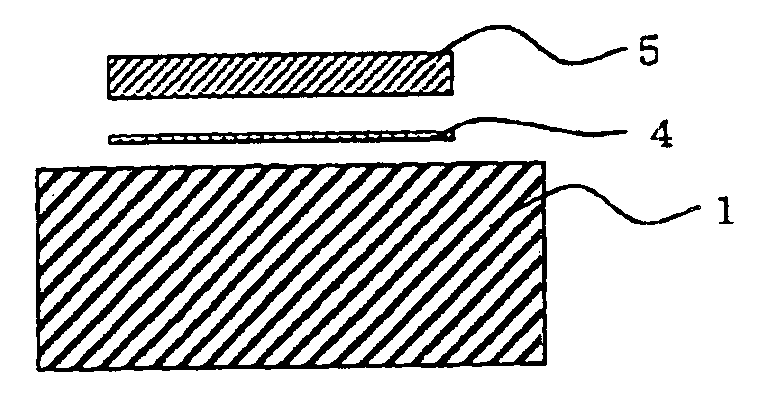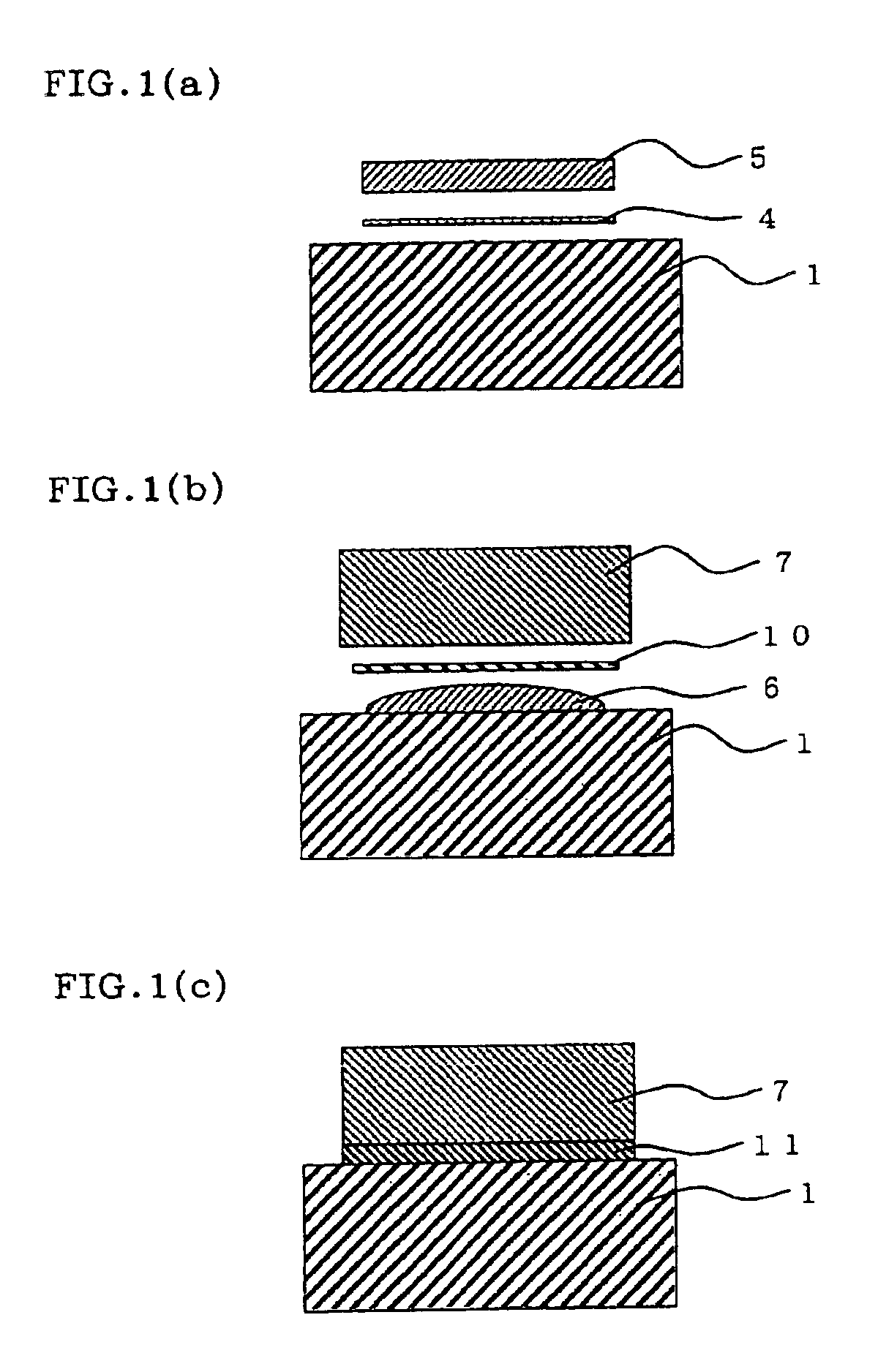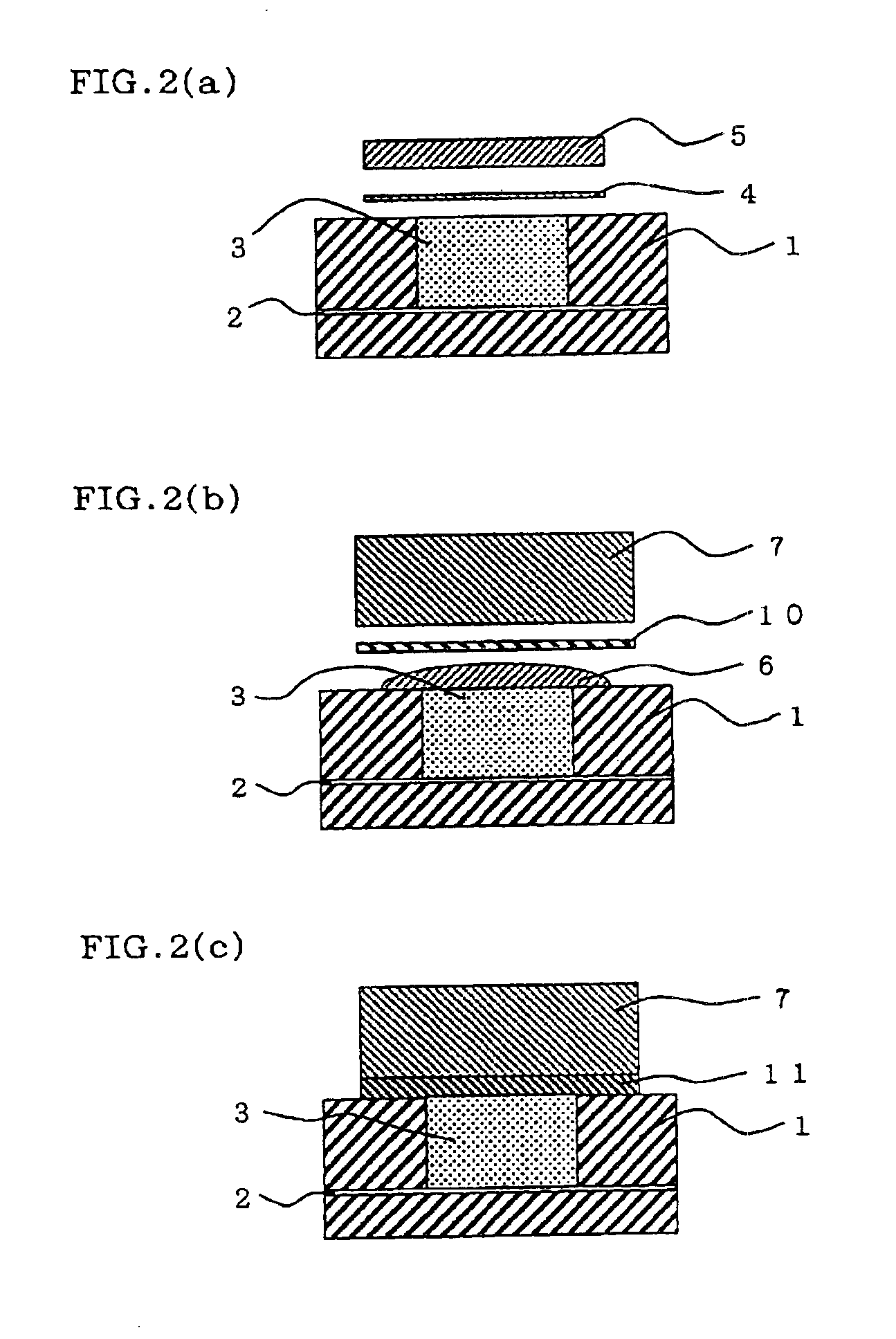Bonded member comprising different materials, and production method thereof
a technology of bonded members and composite bonded components, which is applied in the direction of manufacturing tools, welding/cutting media/materials, and manufacturing tools, etc., can solve the problems of deteriorating product reliability, unfavorable increase in production costs of these composite bonded members, and inability to achieve desired bonding strength and air tightness in some cases, and achieves simple operation
- Summary
- Abstract
- Description
- Claims
- Application Information
AI Technical Summary
Benefits of technology
Problems solved by technology
Method used
Image
Examples
examples
[0095]Hereinafter, examples of the present invention will be described. However, it is needless to say that the present invention shall not be limited to the following examples.
examples 1 to 8
[0096]On the surface of a base material made of AlN, a Ti foil having a diameter of 6.5 mm and a thickness of 5 μm (weight: about 0.75 mg) was disposed, and on the Ti foil, a pure Au solder material having a diameter of 6.5 mm and a thickness of 600 μm (weight: about 385 mg) was disposed. Then, they were heated in a vacuum atmosphere at 1,100° C. for 10 minutes, thereby forming a 600-μm-thick Au precoat layer including a layer of a reaction product of the active metal on the base material. For adjustment of the thickness of the precoat layer, the heat treatment was carried out with setting up a simple weir made of carbon around the pure Au solder material. On the precoat layer, an Al foil having a diameter of 5 mm and a thickness of 13 μm (weight: about 0.7 mg) was disposed as an insertion metal layer, and then an Ni or Kovar terminal (diameter: 5 mm) was disposed thereon as a metallic member (terminal). Then, they were heat-pressed in a vacuum atmosphere at 600 to 900° C. for 10 or...
examples 9 to 11
[0097]The procedure for the foregoing Examples 1 to 8 was repeated except that in place of the Al foil serving as the insertion metal layer, a crushed Au-5Al alloy or Au-3Al alloy was disposed on the precoat layer in an amount of about 32 mg (corresponds to a diameter of 6.5 mm and a thickness of 50 μm at the time of melting upon preparation of these alloys), that an Ni terminal (diameter: 5 mm) was used as the metallic member (terminal), and that bonding was carried out at 700° C. or 800° C. Thereby, bonded members comprising different materials were obtained (Examples 9 to 11). In all cases, no cracks were formed in the base materials at the time of bonding.
PUM
| Property | Measurement | Unit |
|---|---|---|
| temperature | aaaaa | aaaaa |
| thickness | aaaaa | aaaaa |
| melting point | aaaaa | aaaaa |
Abstract
Description
Claims
Application Information
 Login to View More
Login to View More - R&D
- Intellectual Property
- Life Sciences
- Materials
- Tech Scout
- Unparalleled Data Quality
- Higher Quality Content
- 60% Fewer Hallucinations
Browse by: Latest US Patents, China's latest patents, Technical Efficacy Thesaurus, Application Domain, Technology Topic, Popular Technical Reports.
© 2025 PatSnap. All rights reserved.Legal|Privacy policy|Modern Slavery Act Transparency Statement|Sitemap|About US| Contact US: help@patsnap.com



